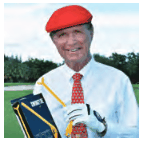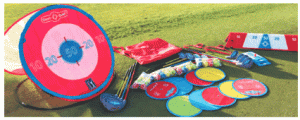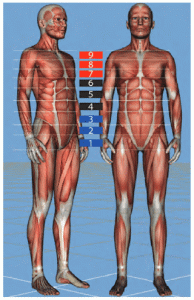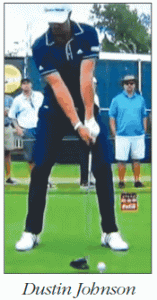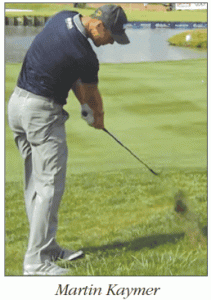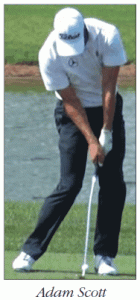Looking Back
Editor’s note: This is another in our series of articles from the archives of Golf Teaching Pro from the Winter 2014 edition. It was written by now-retired USGTF examiner Mike Levine, and is considered one of the finest articles ever to appear in this magazine. For those of you old enough to remember, it should be a fond reminder of times gone by. If you’re from the younger generation, take a walk back in time when the game was simpler and a certain innocence still existed.
Having struck my first golf shot more than 55years ago, I enjoy reminiscing about golf’spast and my own golf memories. I miss the sight of a beautifully-grained wooden-headed driver, remembering when the wooden heads seemed normal in size in relation to the ball size…masterly finished, gleaming against the green grass with a bright white ball perched in front, begging to be struck down the fairway.
I miss those smaller British balls. I believe they were the “Penfold” brand, individually wrapped in colored cellophane, and instead of numbers, the balls came marked with the symbols used on playing cards: hearts, aces, clubs, or spades. Those balls went a mile into the wind.
It was assumed by all who attempted the game that a certain level of skill would be needed to properly strike the ball. The efforts of such a task were assumed and welcomed. Equipment wasn’t expected to be able to do it for you. In golf’s past, equipment served only as a simple means, as do a pencil and paper, to allow us to express our thoughts or talents. Other than a sand wedge, equipment rarely afforded any advantage to a player. Having good-feeling grips and an adequate number of clubs, rarely the full 14, were the norms for me and for most when I began to play.
I enjoyed the mystery of the game, and the mystique associated with those who had the “secrets “and were able to propel that little white ball a much longer distance than the effort had suggested. That was the magic that hooked most of us to this game, how easy it seemed when done properly. No forcing the swing; just a smooth flow of the clubhead and the ball was propelled, as if magically, at a distance that would baffle the practitioner. The ball felt “soft” on the clubface, and the sweet spot seemed large enough for the task.
After all, skill would be needed to repeat this action. A player didn’t expect to buy his expertise with equipment. Lessons and practice were understood to be the components needed for improvement.
Golf swings were somewhat of a mystery as well, back then. Most great players of the day didn’t know every little detail of their swings. They knew how the swing felt when working well, and during those times, they would just let it be and run with it, and not be too analytical and destroy the fluid feeling. Even teachers of the day kept it pretty simple. They usually stuck only to the fundamentals or simple swing thoughts when giving lessons or helping better players. The golf swing had not been so dissected and analyzed as it is today.
The video camera’s arrival and evolution changed the golf swing, allowing players and teacher’s instant video feedback and slow-motion replay of swings and swing parts. This technology enabled detailed analysis and understanding of motions that couldn’t be adequately seen by the naked eye alone, forcing the golf swing to become what it has become today – more machine-like and mechanical in nature, and like all scientific analysis, removing the “mystery” and replacing it with cold hard facts.
We pay a price for this scientific understanding, similar to having witnessed a great magic trick: We enjoy being amused and baffled, but our curiosity nags us to want to know the secrets of such magic until our searching reveals the secrets. It is a bittersweet awareness, similar to unmasking Santa Claus or the tooth fairy. And like most of life today, doing so has taken yet another mystery and sanitized some of the joy out of the “fabric” of the mystique.
Being a society ruled by technology and scientific method, soon the golf swing would succumb to this search for perfection and understanding. Professionals and teachers alike were now using this new detailed swing analysis to build a modern, more powerful, “more perfect” golf swing. One unexpected result of all this analysis was the inevitable creation of a similar or comparable-looking and functioning golf swing. This scientific observation of the golf swing led all investigators to similar parallel conclusions about the details of what makes a golf swing tick. This is an inevitable side effect of scientific observation: All valid research leads to analogous conclusions, not only homogenizing the “modern golf swing,” but all areas of scientific inquiry.
This effect spills over into all aspects of modern living. As a society, we are becoming homogenized in what we think, see, hear, eat and believe. And yes, even in the way we swing a golf club!
The modern golf swing arguably is more powerful and allows some players to hit the ball enormous distances, but in the quest for continued perfection that most modern players are obsessed with, few of today’s players “own” their swings. The constant tweaking causes modern players to never be satisfied, to always be searching for more perfection…never quite having the “finished product.”
Modern swings are always a work in progress, whereas in days gone past, most great players would embrace their “flaws” and leave them be. The attitude of old was that perfection was not the goal – repeatability was. Most great players of the past all had minor imperfections or flaws in their swings, and were able to win majors with them and achieve greatness. The likes of Nicklaus, Palmer, Player, Trevino, Snead, and the great Bobby Jones, as well as many others, all had “signature flaws.” This made their swings and many others of the era readily identifiable.
I miss those “old” swings, the ones that added style and humanity to the game…but, such is progress, even in golf.




